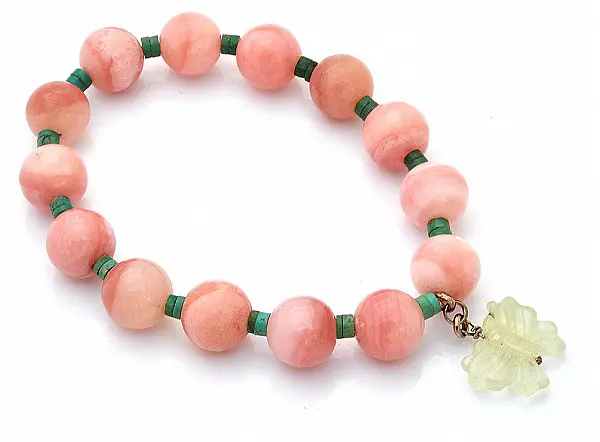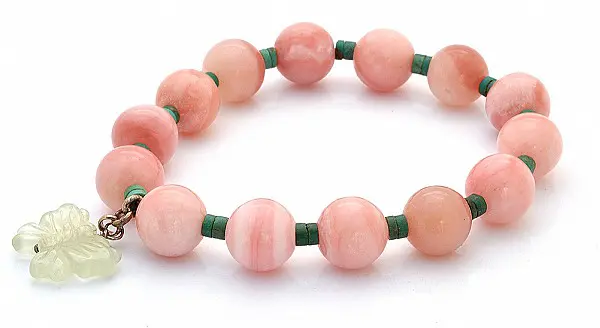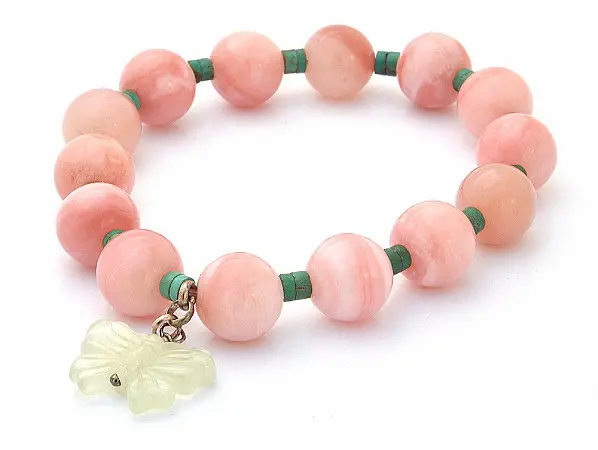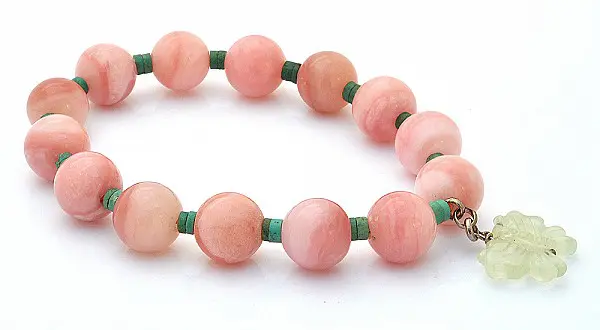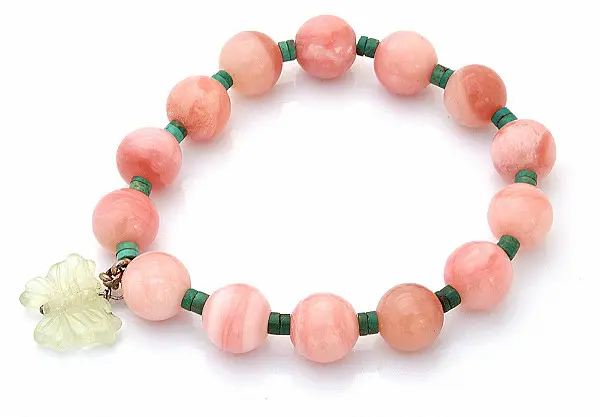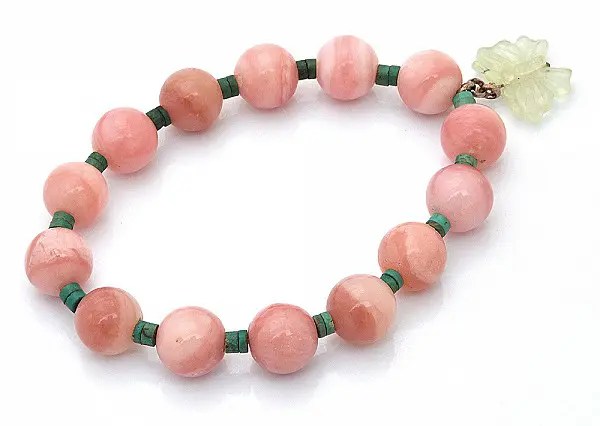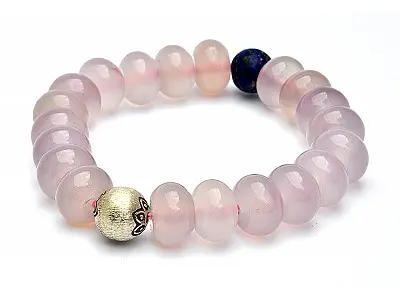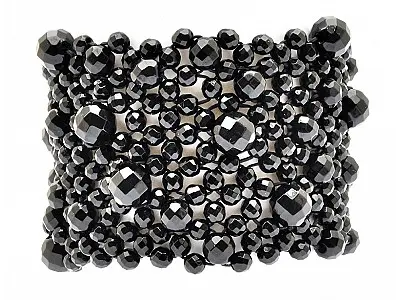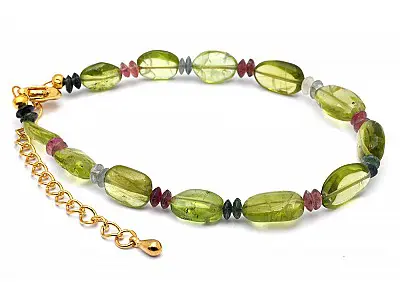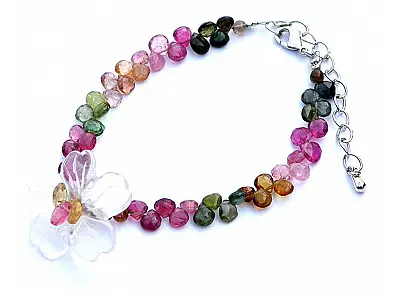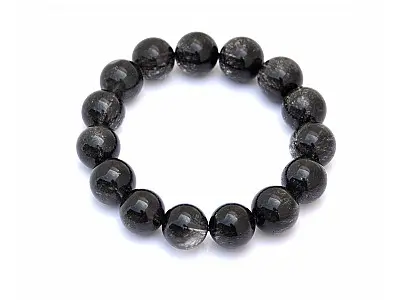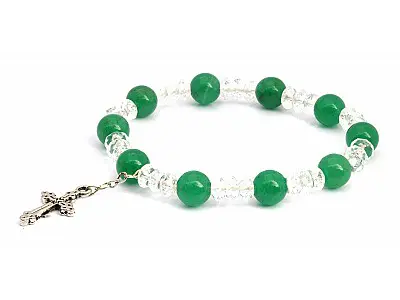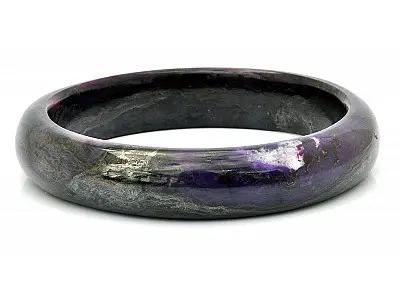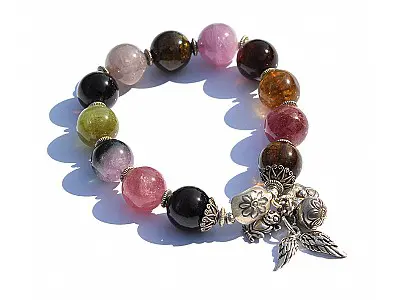Pink Opal Beads Bracelet with Prehnite Butterfly Hanger
Prehnite
With its bright, almost luminescent green coloring Prehnite is an attractive mineral that can have a very good luster. It forms in cavities in basaltic rocks. Prehnite is a hydrous, calcium-aluminum-silicate mineral, which is commonly found in cavities and "pillows" and along fractures of basalt and diabase rock.
It can be facetted or carved into ornaments. Prehnite was the first mineral to be named after a person, the Dutch minerologist Colonel Hendrik von Prehn (1785), who discovered the mineral in Jurassic (Karoo) dolerite in the Cradock district of the Eastern Cape Province in the early 18th Century. Prehnite was therefore the first type-locality species discovered in South Africa.
Usually a pale green to a grass green, Prehnite can also be gray, white or colorless. Some rare specimens even resemble.
Spiritually, it is believed that Prehnite can enhance one's protective field, dreaming and remembrance; bring peace and calm; and help build the immune system. It is useful for anemia and blood disorders. Its color and unusual touch generate serenity and tranquility, ideal for stress release.
Prehnite is much in demand amongst Channellers and Shaman¡¦s who know it as the Prediction Stone. In healing, Prehnite has been used to reduce high blood pressure and control hypertension.
Opal
Opal is a sedimentary stone. Under proper conditions, water percolates through the earth, becoming rich in dissolved silicates. When it enters a cavity, the silicates are deposited as tinys. If they are uniform in size and shape, they will diffract light. If they are random in shape and arrangement, we have common opal.
... Volcanic ash gives black opal its color, but inclusions have nothing to do with the play of color. That is due entirely to the tinys. They must be smaller than 1500 angstroms for blue and violet colors, but no larger than 3500 angstroms to produce oranges and reds. To put that in perspective, 20,000s are about the size of the period at the end of this sentence.
... Opal grows by filling in cavities, regardless of their shape. Hence, we have many pseudomorphs, materials with shapes that are unrelated to the chemical content. The most common are opalized wood and seashells.

